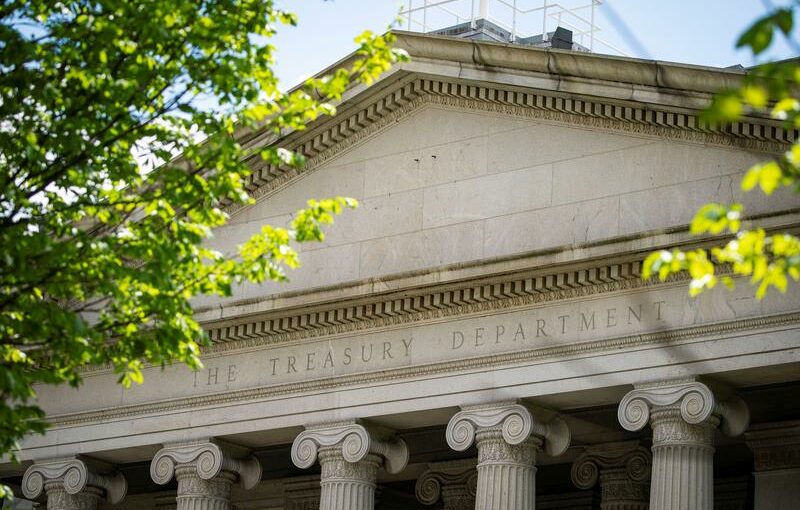(Reuters) – A bruising bond market sell-off earlier this year appears to remain high on the minds of Federal Reserve officials, who in a report on Thursday singled out the event as illustrative of continuing liquidity issues in the $21 trillion U.S. Treasury market.
The Feb. 25 drubbing followed a historically poor auction of 7-year Treasury notes and sent yields surging as market liquidity evaporated in minutes. That day’s negative return for Treasuries overall of minus 0.72%, according to ICE BofA bond index data, stands as the largest loss of the year and among the largest in the last 12 months.
The event, coming less than a year after the Fed had to inject $2 trillion into the bond market in the space of about five weeks to keep it from a complete melt down, “highlighted the importance of continued focus on Treasury market resilience,” the Fed said in its semi-annual Financial Stability Report.
Treasury market functioning has been “generally more stable” since the blow out last spring, which has been the focus of extensive investigation by the Fed and other market regulators. Thursday’s report noted the Financial Stability Oversight Council, headed by the Treasury Secretary and including the chair of the Fed, has “called for an interagency effort to understand key causes of last year’s disruptions and to find ways to enhance market resilience.”
Still, the Feb. 25 incident remains concerning given the slow and uneven recovery of key measures of liquidity in the Treasury market, the world’s largest bond market and touted by U.S. officials as the deepest and most liquid as well.
“Market depth overall rebounded in subsequent weeks; however, for short- and medium-dated securities, the recovery was uneven and slower on net,” the Fed said.
Charts accompanying the report show that average market depth – a key liquidity measure that can indicate Wall Street dealers’ capacity to absorb large market moves – plunged in the sell-off, dropping at the 5-year tenor to roughly $100 million from $250 million. It has since recovered only to about $150 million, while market depth for 30-year bonds has more than fully recovered.
Thursday’s report also highlighted shortcomings Fed officials see in other sectors, such as money market mutual funds and hedge funds, and may auger a regulatory push soon to address them.
Source: Read Full Article
